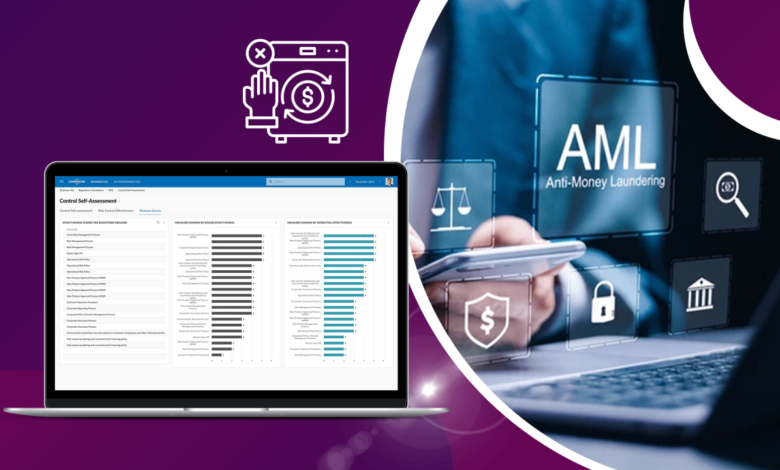What features should you look for in AML software for banks?

It is hard to identify suspicious money activities. A bank must ponder which features their AML software must have to identify these activities. According to Andrew, “Fines for mistakes are high. We need software that watches transactions and finds suspicious ones fast.” In 2023, global AML fines exceeded $2 billion in the first half of the year alone, emphasizing the urgent need for effective monitoring tools.
Automated software, such as AML, must be brought into your bank. It must ensure all regulations are observed and do the job automatically, as it saves time for the bankers. This must integrate effortlessly into your core bank systems. It must watch transactions by your customers but notify them of risks. That shows suitable software selection. This article will discuss the features necessary in AML software for banks to detect suspicious activities timely.
Read Also: https//mobilehomeexteriors.com
Regulatory compliance capabilities
Banks must follow the rules to avoid penalties. A fine AML software must make it easy to update these rules. Its compliance software must explain all existing and upcoming laws and regulations. It must facilitate the banks in keeping vigilant eyes on the movement of money of customers in ways that will ensure compliance with all legal standards.
Compliance capabilities that address the shifting needs of regulatory compliance can help banks avoid oversight issues. In 2023, global banks were spending over $180 billion per year on compliance measures. And where appropriate, software can make all the difference in managing costs and regulations.
Risk-based transaction monitoring
Monitoring transactions for suspicious signs is a very complex job. AML software frees the banks from this task. It has to analyze the transactions against the risk level of every account. Some routine money transfers look regular, while others may ring an alarm depending on the customer profile. Effective risk-based monitoring quickly identifies unusual dealings and alerts the bank.
This approach focuses on reviewing the clients who are at higher risk for strong compliance. Global AML software spending is expected to reach $3.42 billion by 2026 as the regulatory pressures and financial crime risks continue to advance.
Bonus: To learn how our AML Compliance Software Solutions can help your bank meet its entire set of regulatory requirements, visit our website.
Customizable watchlists and rules
The AML software used by a bank may be customized for its own needs. For instance, it can feature customized watchlists that allow for names or account numbers to be flagged and tracked more closely. Adjustable settings can be allowed to fine-tune how a bank wants the monitoring system to rank risks.
Consequently, quality time spent on screening areas that require more control is distributed according to the institution’s customer base. Fine-tuned watchlists and rules further contribute to better rules management. Studies show up to 80% reductions in false positives for banks with the aid of advanced AML systems.
Integration with core systems
Banks can make use of pre-existing core systems for customer and transaction accounts. Better software for banks automatically integrates into such systems. Seamless integration means that data on the movements of customers’ money and their related information can be accessed directly by the monitoring system. This simplifies risk assessment, and alerts come more quickly to the bank. Without interface issues between applications, compliance is stronger. Studies have shown that banks with integrated systems for AML may cut back on manual work by 40%.
User and entity analytics
AML solutions analyze deeper usage of accounts and the modalities on how entities operate. Such user and entity information further provides more context for transaction monitoring. The software observes patterns over time to spot deviations. This type of analytics gives more informed risk-based assessments. The bank gets valuable insight that enables targeting the regulatory effort with effective productivity, where global AML software market revenue is expected to reach $5.8 billion by 2027.
Ongoing customer due diligence
Rules must be constantly monitored by all clients, not only new ones. Effective AML compliance software monitors regularly because relationships and risks may change. It continuously assesses customer profiles and activities for new red flags that require attention. This constant due diligence from the monitoring software further underlines full regulatory compliance. It reduces up to 40% of false positives in risk assessment with sophisticated machine learning models.
Automated SAR generation and filing
Reporting suspicious activity is a necessary step, but filing those reports manually is very time-consuming. Advanced AML risk management software takes care of that step automatically. It automatically forms final Suspicious Activity Reports from all alerts and e-files them. This streams the workload, and it continues to generate reports at a frequency that will help protect the bank from issues down the line. Some systems reduce manual reporting time by as much as 80%.
Continuous software updates and upgrades
Laws and risks change constantly, and an AML program cannot become static. Useful AML monitoring software for banks provides constant improvements to that end. It receives automatic updates from the developer upon new regulations or sophisticated threats. Upgrade to programs seamlessly integrated into the compliance workflow. This future-proofing from the software manufacturer maintains strong regulation management for the bank in the face of evolving standards and criminal techniques. All are going in line with expected global AML spending levels surpassing over $214 billion by 2027.



